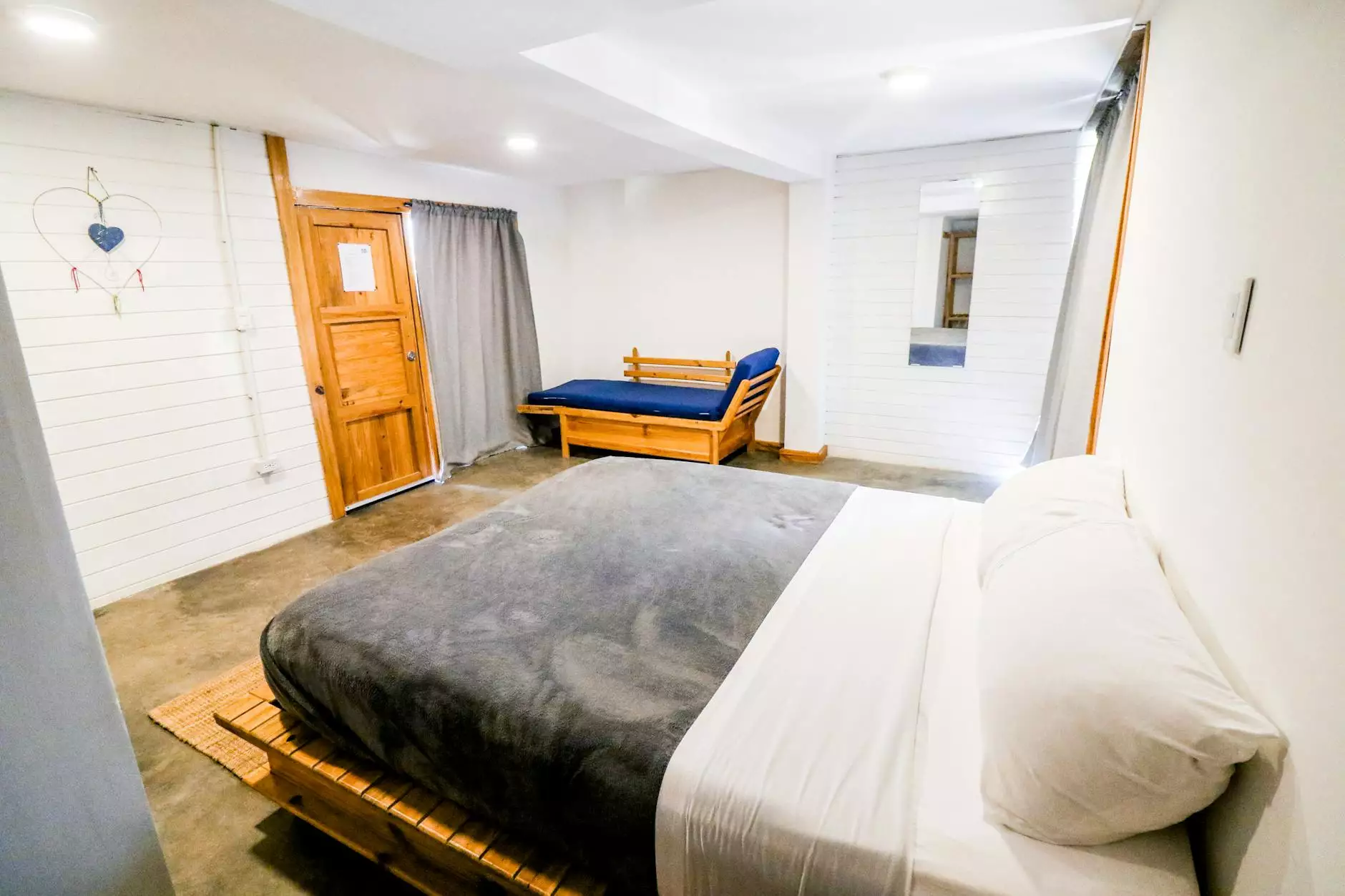Comprehensive Guide to Inferior Shoulder Mobilization: Unlocking Better Health & Mobility

Introduction to Inferior Shoulder Mobilization
In the realms of health & medical sciences, innovative treatment techniques continue to evolve. Among these, inferior shoulder mobilization has emerged as a highly effective manual therapy technique, especially within chiropractic practices and physical therapy clinics. This specialized procedure focuses on restoring optimal shoulder function, alleviating pain, and enhancing overall mobility. Whether you're a healthcare professional or an individual seeking advanced treatment options, understanding the intricacies of inferior shoulder mobilization can be transformative for shoulder health management.
Understanding the Importance of Shoulder Mobility in Overall Health
The shoulder joint is renowned for its remarkable range of motion, which is essential for conducting daily activities, sports, and ergonomic movements. When shoulder mobility is compromised—due to injury, aging, or illness—it can lead to pain, stiffness, and decreased quality of life. Improving shoulder function through targeted techniques like inferior shoulder mobilization plays a critical role in restoring independence and reducing dependence on medications or invasive procedures.
What Is Inferior Shoulder Mobilization?
Inferior shoulder mobilization is a manual therapy technique performed by trained chiropractors, physical therapists, and osteopaths. It involves specific hands-on movements designed to increase the inferior glide of the humeral head within the glenoid cavity, thereby enhancing shoulder joint mobility. This technique is especially beneficial in conditions where shoulder elevation or abduction is restricted, such as in frozen shoulder, adhesive capsulitis, post-surgical stiffness, or rotator cuff injuries.
Legal and Medical Foundations of Inferior Shoulder Mobilization
Historical and clinical studies have demonstrated the safety and efficacy of inferior shoulder mobilization. Rooted in joint biomechanics and neuromuscular control theories, this technique helps to realign joint surfaces, reduce capsular tightness, and improve synovial fluid movement—key factors that maintain healthy shoulder function. As part of integrated health & medical approaches, the method is tailored to individual patient needs, backed by evidence-based practice standards.
The Scientific Principles Behind Inferior Shoulder Mobilization
- Joint capsule elasticity: Mobilization stretching helps improve the flexibility of the shoulder joint capsule, which often becomes contracted after injury or immobilization.
- Synovial fluid stimulation: Gentle movements promote the production and circulation of synovial fluid, essential for nourishing cartilage and reducing friction during movement.
- Neuromuscular re-education: Enhances proprioception and muscular control around the shoulder joint to prevent reinjury.
- Biomechanical realignment: Restores proper alignment and movement mechanics, reducing pain and improving joint stability.
Indications and Conditions Treated by Inferior Shoulder Mobilization
Inferior shoulder mobilization is particularly effective in managing a wide range of shoulder disorders, including:
- Frozen shoulder (adhesive capsulitis): A condition characterized by stiffness and pain that severely limit movement.
- Rotator cuff injuries: Including tears and tendinopathies that restrict shoulder elevation and lateral movement.
- Post-operative shoulder recovery: Facilitates faster healing and regain of motion after surgical interventions.
- Shoulder impingement syndrome: Reduces pressure on rotator cuff tendons and improves joint clearance.
- Shoulder bursitis: Alleviates inflammation and restores smooth movement.
- Shoulder stability and strengthening: In cases of instability or recurrent dislocations, mobilization supports joint reinforcement.
Step-by-Step Process of Performing Inferior Shoulder Mobilization
The application of inferior shoulder mobilization requires precise technique and a thorough understanding of shoulder anatomy. Typically, it involves the following steps:
- Assessment: The practitioner evaluates the range of motion, pain points, and joint stability.
- Preparation: Patient positioning usually involves lying supine or sitting upright, depending on the specific case.
- Palpation: The clinician palpates the shoulder to identify tight structures and areas needing mobilization.
- Mobilization technique: Using the clinician’s hands, gentle but firm traction is applied inferiorly to the humeral head, ensuring movements stay within safe and comfortable limits.
- Repetition and feedback: Multiple controlled repetitions are performed, with continuous feedback from the patient regarding comfort and pain levels.
- Reassessment: Post-mobilization evaluation confirms improvements in mobility and reduction in pain.
It is crucial that this technique is performed by licensed professionals to avoid overstretching or injury.
The Role of Chiropractors and Medical Professionals in Shoulder Care
Chiropractors play a pivotal role in applying inferior shoulder mobilization, leveraging their expertise in manual therapy and joint biomechanics. By integrating this technique into comprehensive treatment plans, chiropractors help patients recover function, reduce pain, and regain confidence in their shoulder movements.
In medical settings, inferior shoulder mobilization complements surgical and pharmacological interventions. It is used in conjunction with physical therapy, ergonomic advice, and sometimes regenerative medicine approaches to optimize recovery outcomes.
The Benefits of Inferior Shoulder Mobilization Over Other Treatment Options
- Non-invasive: No need for surgery or medication, reducing risks associated with invasive procedures.
- Immediate pain relief: Patients often report decreased discomfort following sessions.
- Enhances range of motion: Particularly effective in increasing shoulder elevation and abduction.
- Customized approach: Treatment is tailored based on individual assessment and response.
- Promotes joint health: By stimulating synovial fluid and improving cartilage nutrition, it supports long-term joint wellness.
Why Choose iaom-us.com for Your Shoulder & Health Needs
At iaom-us.com, we are dedicated to providing premier health & medical education, chiropractic expertise, and innovative treatment options focused on mobility and pain management. Our team of licensed professionals specializes in inferior shoulder mobilization as part of a comprehensive approach to rehabilitation and wellness. Whether you require rehabilitation, education, or chronic condition management, our services are designed to deliver exceptional outcomes.
The Future of Shoulder Therapy: Embracing Innovative Techniques
Advancements in manual therapy, imaging, and research continue to refine techniques like inferior shoulder mobilization. Incorporating biomechanical assessments, digital imaging, and patient-centered care leads to personalized treatment plans that maximize benefits. The intersection of health & medical, education, and chiropractic innovation ensures that patients gain access to cutting-edge therapies with proven success rates.
Key Takeaways and Final Thoughts
In summary, inferior shoulder mobilization is a pivotal technique in modern shoulder care, offering a non-invasive, effective solution for restoring movement and reducing pain. Its integration within chiropractic and medical practice frameworks ensures a holistic approach to shoulder health. By enhancing joint function through targeted manual therapy, individuals can experience improved quality of life, greater independence, and a quicker return to daily activities.
Contact Us for Expert Guidance on Shoulder Health
If you're seeking professional assessment or treatment options involving inferior shoulder mobilization, visit iaom-us.com. Our team is committed to advancing health, education, and wellness for all our clients, offering personalized care grounded in the latest research and clinical expertise. Don't let shoulder pain or stiffness limit your lifestyle—reach out today and take the first step towards better mobility and health.









